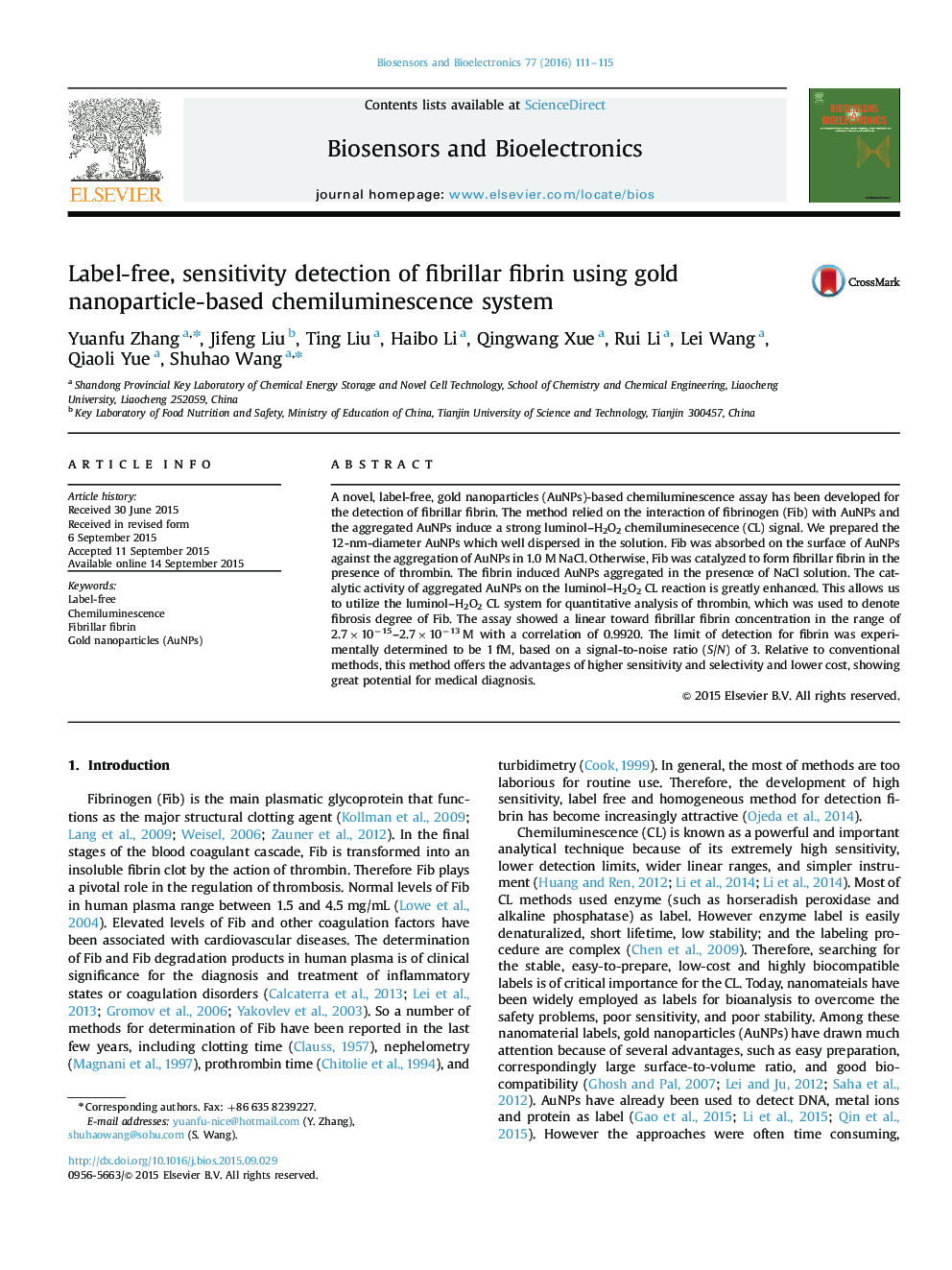| Article ID | Journal | Published Year | Pages | File Type |
|---|---|---|---|---|
| 7231285 | Biosensors and Bioelectronics | 2016 | 5 Pages |
Abstract
A novel, label-free, gold nanoparticles (AuNPs)-based chemiluminescence assay has been developed for the detection of fibrillar fibrin. The method relied on the interaction of fibrinogen (Fib) with AuNPs and the aggregated AuNPs induce a strong luminol-H2O2 chemiluminesecence (CL) signal. We prepared the 12-nm-diameter AuNPs which well dispersed in the solution. Fib was absorbed on the surface of AuNPs against the aggregation of AuNPs in 1.0Â M NaCl. Otherwise, Fib was catalyzed to form fibrillar fibrin in the presence of thrombin. The fibrin induced AuNPs aggregated in the presence of NaCl solution. The catalytic activity of aggregated AuNPs on the luminol-H2O2 CL reaction is greatly enhanced. This allows us to utilize the luminol-H2O2 CL system for quantitative analysis of thrombin, which was used to denote fibrosis degree of Fib. The assay showed a linear toward fibrillar fibrin concentration in the range of 2.7Ã10â15-2.7Ã10â13Â M with a correlation of 0.9920. The limit of detection for fibrin was experimentally determined to be 1Â fM, based on a signal-to-noise ratio (S/N) of 3. Relative to conventional methods, this method offers the advantages of higher sensitivity and selectivity and lower cost, showing great potential for medical diagnosis.
Related Topics
Physical Sciences and Engineering
Chemistry
Analytical Chemistry
Authors
Yuanfu Zhang, Jifeng Liu, Ting Liu, Haibo Li, Qingwang Xue, Rui Li, Lei Wang, Qiaoli Yue, Shuhao Wang,
